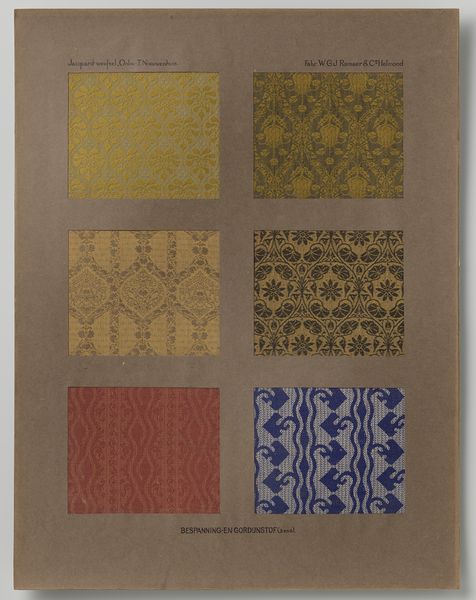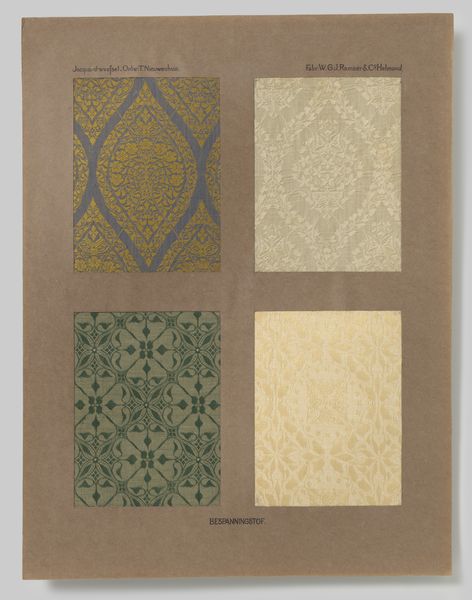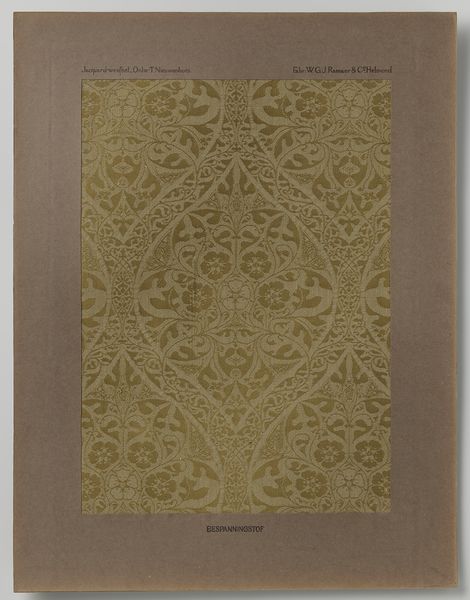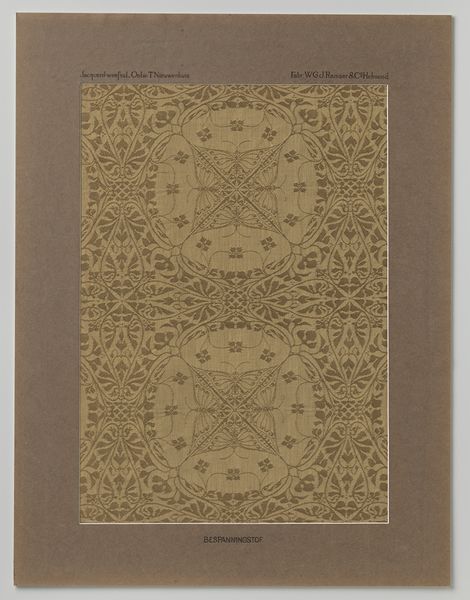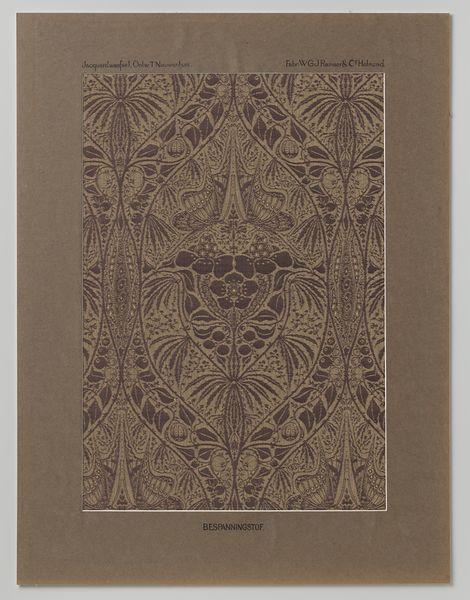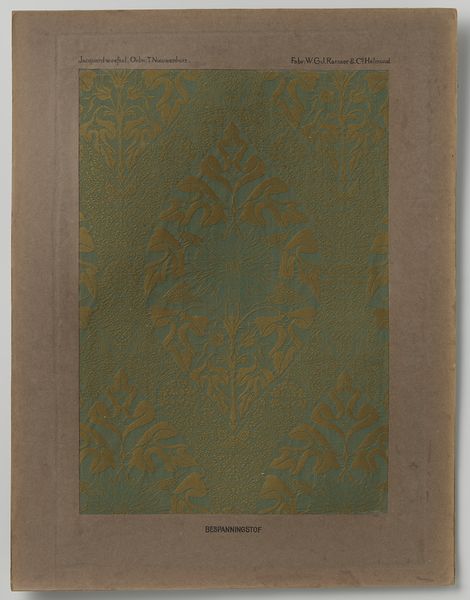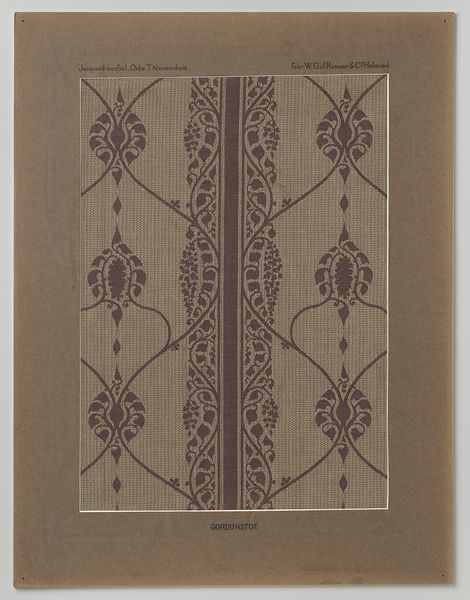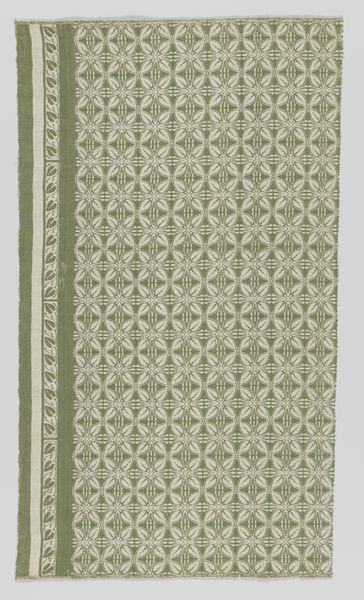
Stalen bespanningsstof naar ontwerp van Theo Nieuwenhuis in passe-partout c. 1910
0:00
0:00
theonieuwenhuis
Rijksmuseum
print, textile
#
art-nouveau
# print
#
textile
#
fabric design
#
pattern repetition
#
textile design
#
decorative-art
Dimensions: height 64.0 cm, width 49.5 cm
Copyright: Rijks Museum: Open Domain
Editor: This is "Stalen bespanningsstof naar ontwerp van Theo Nieuwenhuis in passe-partout," a textile design print from around 1910. I’m immediately struck by how neatly ordered these samples are, yet each one feels so distinct in color and pattern. What do you see when you look at this? Curator: I see a moment in time where art aimed to permeate the everyday. Consider the psychological impact of these patterns repeated on walls, furniture... these aren’t just decorative; they’re constructing an environment, shaping moods. Do you see any recurring motifs across the samples? Editor: I notice floral or plant-like elements in most of them. There’s a stylized quality to the way they're depicted. What do these natural forms evoke? Curator: Think about what nature represented during the Art Nouveau period – vitality, growth, but also a kind of seductive wildness. These repeating patterns offer an ordered, tamed version of nature, bringing its essence indoors. But also think about textiles – cloth enfolds, protects, hides, reveals. What psychological work is pattern performing? Editor: It’s fascinating to consider how deeply symbolic something like wallpaper could be. So it's not just pretty, it's also a way of connecting us to nature and perhaps even our own inner "wildness" in a controlled way. Curator: Precisely! And the designers of this era understood the power of that connection, and the visual language to achieve it. This piece showcases more than aesthetic preferences; it illustrates a cultural yearning. I am seeing in these fabrics the foundations of continuity with future styles as well. Editor: I hadn’t thought about it that way, viewing design as such a profound dialogue with cultural needs. It’s given me a lot to think about.
Comments
No comments
Be the first to comment and join the conversation on the ultimate creative platform.
